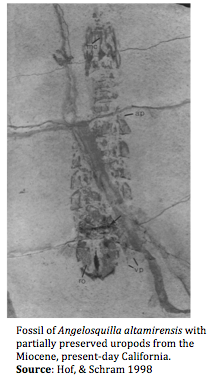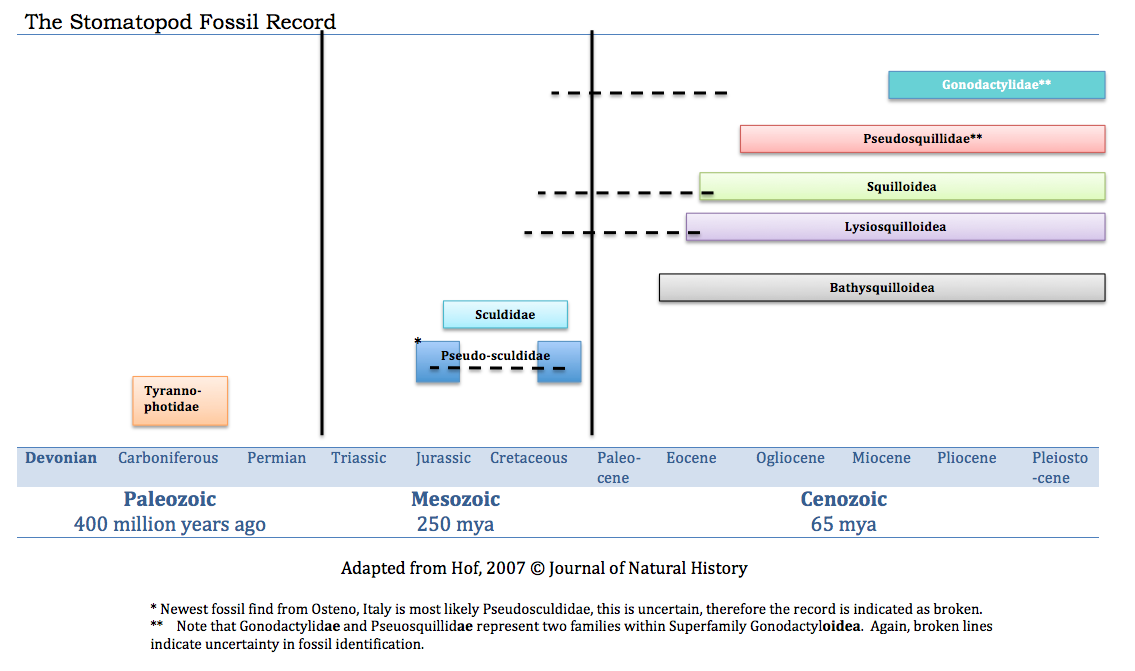Fossil History

The fossil record of order Stomatopoda, while extensive, is quite fragmented (Schram and Hof, 1997). Despite the high fossilisation capability of stomatopods resulting from high calcium and phosphorus levels in the stomatopod's cuticle (Schram and Hof, 1997), less than half of the specimens emanating from the Triassic and Jurassic periods are intact.

The fossil record extends back to the Cambrian (~500 mya), at which time, early Pancrustaceans may have diverged from the Chelicerata (Haug et al., 2012). The Devonian has traditionally been widely cited as the date of origin to which Stomatopods are ascribed (Reaka, 1975; Kunze, 1983; Schram, 2007; Hof, 2007). The critical divergence of spearers from clubbers is known from the fossils of 'proto-mantis shrimp' dated from the subsequent Carboniferous period. Changes in the design of maxillipeds evolved until the development of the first modern "true" stomatopod in the late Carboniferous.
During the Jurassic-Cretaceous periods, the families Sculdidae and Pseudosculdidae and the seven modern superfamilies were first represented bythe fossil records (Manning, 1995; Ahyong, 2001)
In the late Cretaceous some 70 mya, the fossils of Gonodactyloidea (as well as Lysiollideaand Squilloidea) are first recorded and this indicates the point of phylogenetic separation and the first resemblance to modern familes.
 
The Fossil Record of the Stomatopod

Proto- Mantis Shrimp of the Cambrian
The fossil discovery of Yehoia Tenuis, Walcott,1912 (depicted below) from the Cambrian Burgess Shale of North America, shows a basic conserved anatomy with only the raptorial appendages up-scaled from modern Squilloidea family representatives (Haug et al., 2012).
 


|